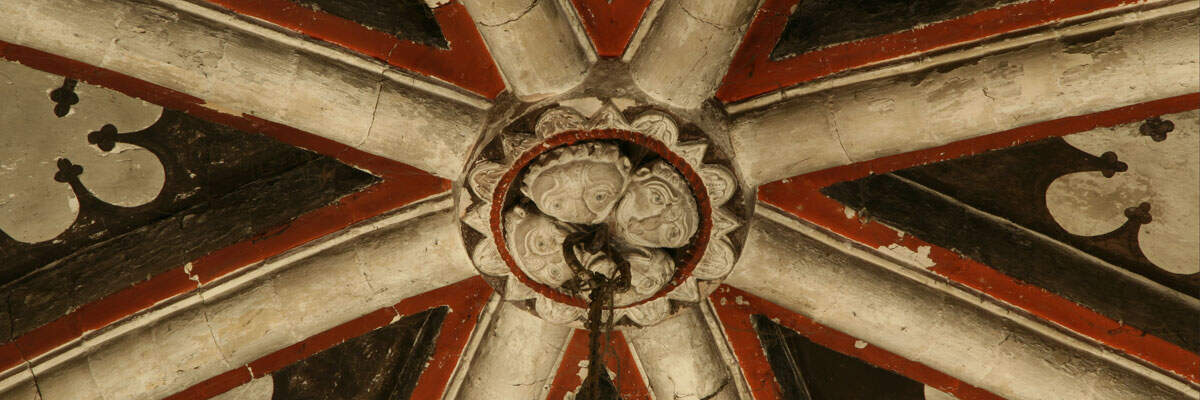Great Bricett is a village in central Suffolk, 5 miles S of Stowmarket and 9 miles NW of the centre of Ipswich. It stands in arable farmland on a minor road that runs from the village to the buildings of Wattisham airfield, immediately N of it. The priory church is in the centre of the village, to the W of the main street, with a moated site 300 yards further to the W. The church is a very long, low aisleless building under a single roof of modern tiles. It has no chancel arch, but the position of the division is marked by an external buttress and a change in masonry, as well as a slight northward change in orientation at the E end and N rood stair. Only the S side of the church is accessible; to the N lay the cloister surrounded by the usual priory offices but after the Dissolution a manor house was built directly onto the NW angle and this covers most of the complex. The nave had a 12thc. W tower, the blocked tower arch surviving inside with a blocked window above it, visible inside and out. The W façade is now plain and gabled, and is partly hidden by the 16thc. manor house built against it. On the W gable is a plain, rendered single bell-cote of 1907. The outline of a blocked, plain S doorway is visible to the E of the S porch. That must be the original doorway ofc.1110; the present S doorway is ofc.1160-70, under a modern flint and timber porch. The S nave windows are largely ofc.1300 with Y-tracery, although there are remade round-headed windows at either end, and the remains of a blocked window immediately E of the porch. The priory church had short transepts with E chapels at the W end of the chancel, and an apsidal E end (discovered by excavation, see Fairweather (1927)). The transepts were apparently removed in a remodelling ofc.1300, when chapels were added further E and a square-ended presbytery. Finally the chapels were removed, although their blocked arches remain, now housing small windows. The presbytery was removed and the present E wall with its five-light flowing tracery window was built in 1868. Pevsner suggests that this window is a copy of what was there before. Three restorations are known after that of 1868. In 1905-07 there were general repairs to the walls and roof by E. H. Sedding of Plymouth, in 1932-34 more general repairs were carried out under H. M. Cautley, and in 1950 the contractors Cubitt and Gotts cariied out unspecified repairs. In one or other of these campaigns the side walls of the chancel and the E end of the nave were repaired or raised with courses of red brick. The S doorway is an important Romanesque feature, not least because of its inscription naming the original dedication of the priory church, and the church also has an elaborately arcaded late-12thc. font. The author is grateful to John Higgitt for his advice about the inscription.



